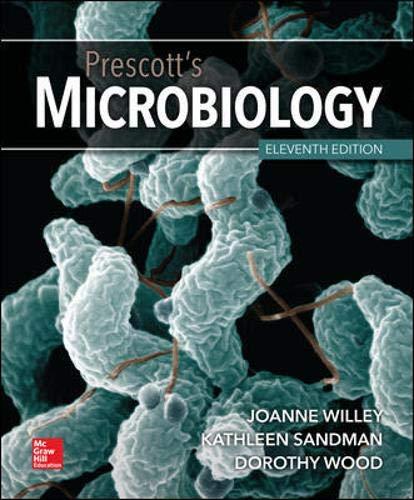
Concept explainers
Want to see the full answer?
Check out a sample textbook solution
Chapter 25 Solutions
Prescott's Microbiology
- The vegetative hyphae of fungi are involved in: A) the uptake of oxygen O B) production of asexual spores OC) absorbing nutrients OD) production of sexual sporesarrow_forwardBriefly explain two ways how ectomycorrhizal fungi affect their hostsarrow_forwardWhat are some ways in which the relationship between a plant root and a mycorrhizal fungus is mutualistic?arrow_forward
- The Fungi are a kingdom driven by their relationships with other taxa. I) What two major roles do fungi play? ii) Describe one example of a specific fungal species that effects humans. Iii) Describe one example of a specific fungal species that effects plants.arrow_forwardMany fungal infections of humans are considered to be opportunistic, meaning that fungi that are normally free-living (usually in soil) can sometimes survive, and even thrive, on or inside the human body. From the fungal “point of view,” what unique challenges would be encountered when trying to survive on human skin? What about inside human lungs?arrow_forwardFungi are a highly diverse group of heterotrophic eukaryotes. Discuss and explain the terrestrialization of fungi.arrow_forward
- In the following diagram of a black bread mold (Rhizopus stolonifer), identify the following structures of a multicellular fungus: mycelium, rhizoids, stolon, sporangium, sporangiophore, sporangiospores. After that, give a brief description/function of each structure: 1. Hypha/Mycelium 2. Rhizoid 3. Stolon 4. Sporangium 5. Sporesarrow_forwardWhat is the difference in food intake in fungus and animals?arrow_forwardIn the following diagram of a black bread mold (Rhizopus stolonifer), identify the following structures of a multicellular fungus: mycelium, rhizoids, stolon, sporangium, sporangiophore, sporangiospores. Note: Sample fungus herein is not found in aquatic environment. Rhizopus stolonifer is a common agent of decomposition of stored foods; they are terrestrial in habitat.arrow_forward
- What can lead to the growth of fungi in humans?arrow_forwardUse the Internet to find examples of chytrids, zygomycetes,ascomycetes, and basidiomycetes that cause diseases in plants oranimals. How does each fungus infect a host and spread to new hosts?What can humans do to fight each disease? What are the costs andbenefits of doing so?arrow_forwardWhich features of a fungus’s body structure are adaptations related to its method of acquiring nutrients?arrow_forward
 Human Anatomy & Physiology (11th Edition)BiologyISBN:9780134580999Author:Elaine N. Marieb, Katja N. HoehnPublisher:PEARSON
Human Anatomy & Physiology (11th Edition)BiologyISBN:9780134580999Author:Elaine N. Marieb, Katja N. HoehnPublisher:PEARSON Biology 2eBiologyISBN:9781947172517Author:Matthew Douglas, Jung Choi, Mary Ann ClarkPublisher:OpenStax
Biology 2eBiologyISBN:9781947172517Author:Matthew Douglas, Jung Choi, Mary Ann ClarkPublisher:OpenStax Anatomy & PhysiologyBiologyISBN:9781259398629Author:McKinley, Michael P., O'loughlin, Valerie Dean, Bidle, Theresa StouterPublisher:Mcgraw Hill Education,
Anatomy & PhysiologyBiologyISBN:9781259398629Author:McKinley, Michael P., O'loughlin, Valerie Dean, Bidle, Theresa StouterPublisher:Mcgraw Hill Education, Molecular Biology of the Cell (Sixth Edition)BiologyISBN:9780815344322Author:Bruce Alberts, Alexander D. Johnson, Julian Lewis, David Morgan, Martin Raff, Keith Roberts, Peter WalterPublisher:W. W. Norton & Company
Molecular Biology of the Cell (Sixth Edition)BiologyISBN:9780815344322Author:Bruce Alberts, Alexander D. Johnson, Julian Lewis, David Morgan, Martin Raff, Keith Roberts, Peter WalterPublisher:W. W. Norton & Company Laboratory Manual For Human Anatomy & PhysiologyBiologyISBN:9781260159363Author:Martin, Terry R., Prentice-craver, CynthiaPublisher:McGraw-Hill Publishing Co.
Laboratory Manual For Human Anatomy & PhysiologyBiologyISBN:9781260159363Author:Martin, Terry R., Prentice-craver, CynthiaPublisher:McGraw-Hill Publishing Co. Inquiry Into Life (16th Edition)BiologyISBN:9781260231700Author:Sylvia S. Mader, Michael WindelspechtPublisher:McGraw Hill Education
Inquiry Into Life (16th Edition)BiologyISBN:9781260231700Author:Sylvia S. Mader, Michael WindelspechtPublisher:McGraw Hill Education





